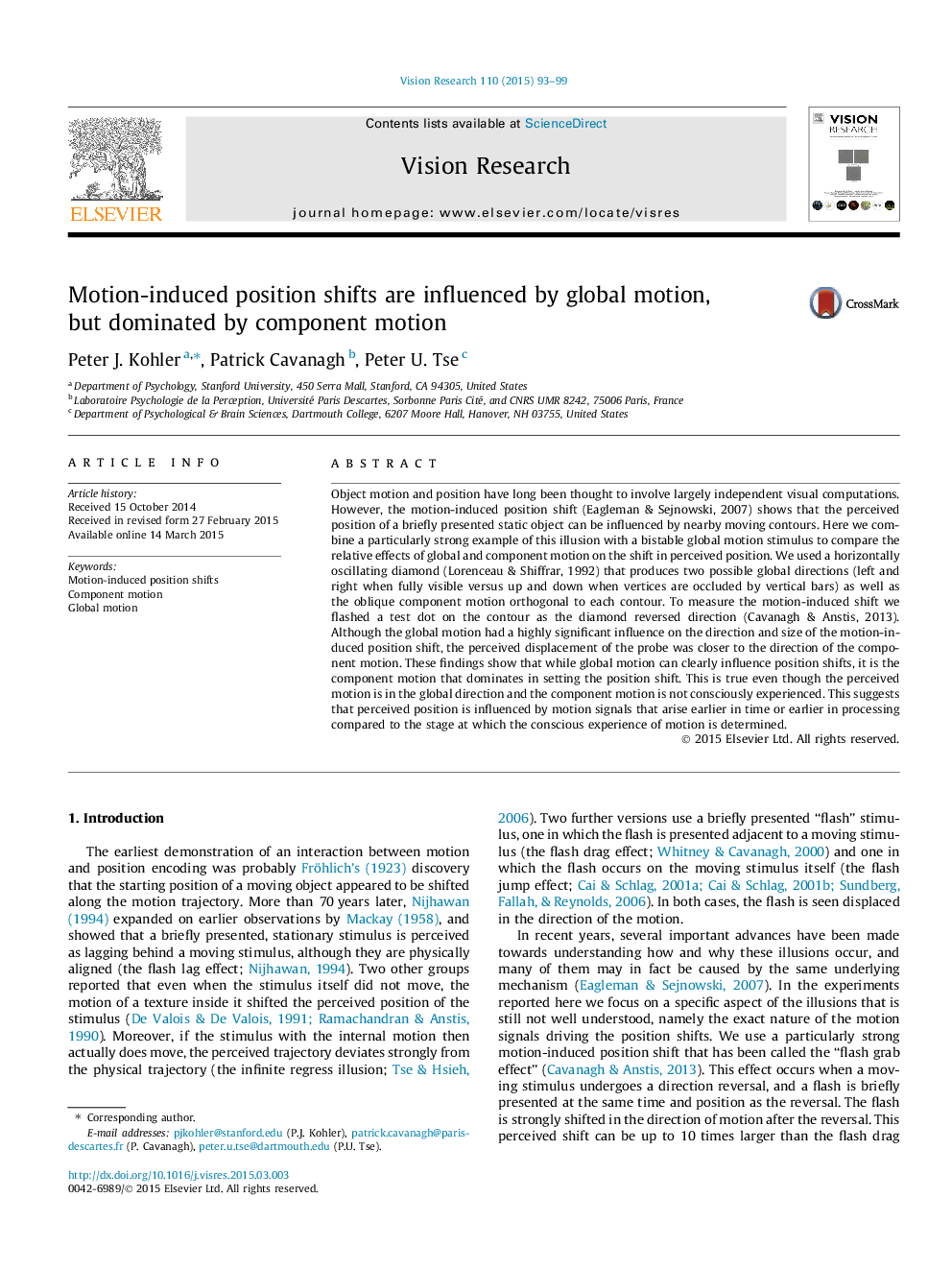| Article ID | Journal | Published Year | Pages | File Type |
|---|---|---|---|---|
| 6203227 | Vision Research | 2015 | 7 Pages |
â¢Global motion can influence size and direction of motion-induced position shifts.â¢Component motion signals, however, have a stronger influence on shift direction.â¢Component motion dominates shift direction even when not consciously perceived.
Object motion and position have long been thought to involve largely independent visual computations. However, the motion-induced position shift (Eagleman & Sejnowski, 2007) shows that the perceived position of a briefly presented static object can be influenced by nearby moving contours. Here we combine a particularly strong example of this illusion with a bistable global motion stimulus to compare the relative effects of global and component motion on the shift in perceived position. We used a horizontally oscillating diamond (Lorenceau & Shiffrar, 1992) that produces two possible global directions (left and right when fully visible versus up and down when vertices are occluded by vertical bars) as well as the oblique component motion orthogonal to each contour. To measure the motion-induced shift we flashed a test dot on the contour as the diamond reversed direction (Cavanagh & Anstis, 2013). Although the global motion had a highly significant influence on the direction and size of the motion-induced position shift, the perceived displacement of the probe was closer to the direction of the component motion. These findings show that while global motion can clearly influence position shifts, it is the component motion that dominates in setting the position shift. This is true even though the perceived motion is in the global direction and the component motion is not consciously experienced. This suggests that perceived position is influenced by motion signals that arise earlier in time or earlier in processing compared to the stage at which the conscious experience of motion is determined.
